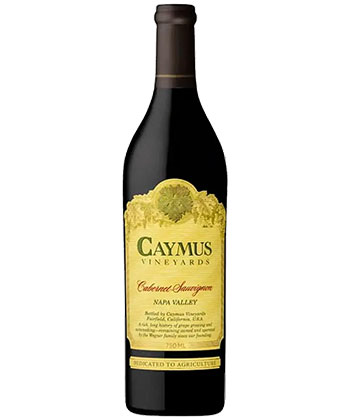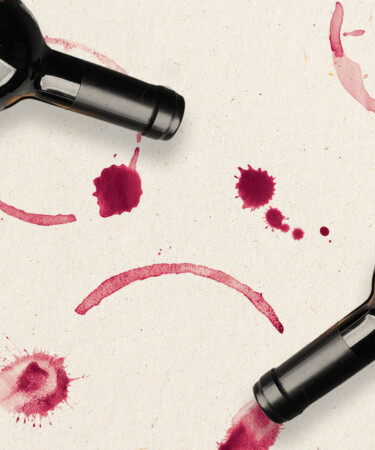A red wine is the sum of several important factors. Terroir, grape varietal, weather, and the vintner’s skill conspire to create a sumptuous beverage that shares a color but varies wildly elsewhere. This diversity makes drinking red wine fun, and any pour of something new and unfamiliar can double as a mini-adventure filled with enticing flavor possibilities.
Of course, wine is highly subjective. As you get more comfortable knowing what reds do and don’t please your palate, you’re bound to encounter a popular or critically acclaimed red that leaves you cold. You’re not alone — wine professionals know this feeling, too. But which reds don’t live up to the hype in their eyes? We asked seven sommeliers to find out which red wines, from the classic to the culty, get more buzz than they deserve.
The most overrated red wines, according to sommeliers:
- Napa Valley Cabernet Sauvignon
- Cabernet Sauvignon under $20
- Listán Negro wines from the Canary Islands
- Beaujolais wines
- Caymus Cabernet Sauvignon
- Cabernet Sauvignons
- Wines from famous wine appellations
“Napa Valley Cabernet Sauvignon seems less competitive in terms of value today. The price often outweighs the quality, making it hard to find a reasonably priced Napa Cab for by-the-glass programs. Additionally, with the Old World’s warmer vintages producing riper Cabernets, there are now more high-quality choices available. This shift provides enthusiasts with a wider range of excellent Cabernet options to consider.” —Drea Boulanger, executive wine director, Spiegelworld, Las Vegas
“Cabernet Sauvignons under $20. When grabbing a bottle of affordable red, a common mistake is to go [straight] to Cabernet Sauvignon. Budget Cabernets do not have the finesse in winemaking to handle the grape’s innate structure. The tannins and alcohol are commonly unbalanced, leaving heat on the nose and bitterness on the palate. Due to barrel prices, It is also a trend [for these producers] to use oak additives like oak chips and fake oak flavoring. This results in a sickly sweet, not-quite-right vanilla aroma. Buyers should look to other regions for budget reds such as the Grenache-based blends from the Languedoc or Portuguese red blends.” —Jonny Thompson, bartender and Level 2 sommelier, sap sua, Denver
“I assume it’s a failing of mine, but I’m baffled as to the popularity of certain red wines from the Canary Islands amongst wine professionals. I was tasting a Listán Negro [varietal] wine from one of the more ‘cult’ producers with some fellow somms last year and while all of them were cooing over it, I felt it was one of the most unpleasant things I’d drunk all year. It had such intense sulfurous qualities that went far beyond the pleasing ‘struck match’ notes of reductive Burgundies. I tasted multiple bottles, including with some long breathing time, and I consistently couldn’t get my head around what was supposed to be the appeal, though I was assured that this was characteristic of the style rather than a fault.” —Gareth Rees, beverage director, Ilili, NYC
“This is more of a lament, [but] as a winemaker who came of age in the era of hyper-ripe, high-alcohol, oak-driven reds, I always looked to the lower-alcohol, fruity, dry reds from Europe for inspiration. I’m delighted that lighter reds other than Pinot Noir are now back in fashion, but unfortunately our Earth has significantly warmed a great deal over the last three decades, making it increasingly hard in many wine regions to make traditional, delicate wines. This is especially the case with my favorite, Beaujolais. So many crus Beaujolais today are now displaying big, jammy, dried fruit characteristics that make them taste more like brawny Rhône reds than the floral, peppery wines I remember.” —Sean O’Keefe, winemaker, Mari Vineyards, Traverse City, Mich.

“Caymus Cabernet Sauvignon is a red wine that you see everywhere, from high-end steakhouses to home wine cellars and everywhere in between. Because of great marketing, their name definitely goes hand-in-hand in great red wine conversations, but when you actually try the wine, it leaves a lot to be desired. Depending on vintage and vineyard site, this brand can run you between $50 [and] $150 or more retail. To me, especially when it comes to California Cabernets, there are more interesting options [at that price range] that blow Caymus out of the competition.” —Bruce Martin Polack, general manager/beverage director, The Regular, Denver
“Many people assume that if a red wine does not meet the standard of a Napa Valley Cabernet Sauvignon, then it is less than desirable. What we aren’t told enough is that there are also several bad examples of Cab Sauvs out there as well: overripe, over-oaked, over-synthesized, and over-the-top science experiments. I feel there are so many wonderful wines out there from so many less popular regions that may not receive a second look because of this false perception of ‘good red wine’ that has been drilled in our heads. Subscribing to this theory, you miss the finesse of a Chinon, the pleasant acidity of a German Spätburgunder, and the brilliant surprise of a Michigan Blaufränkisch. When variety is the spice of life, why stick with one grape?” —Brian Lillie, vice president of hospitality operations and distribution, Chateau Chantal Winery, Traverse City, Mich.
“It’s easy for some people to be seduced by the red wines of renowned appellations like Burgundy, Barolo, and Napa Valley. However, these regions often become dominated by big money and exclusivity, driving prices to exorbitant highs. The focus shifts from the wine itself to the associated status, overshadowing the factors that initially made these regions great. Instead, consider exploring smaller appellations or producers who operate outside the established system. Remember, it was the dedication of small-scale winegrowers that laid the foundation for the now-famous wine regions. By seeking out producers who prioritize transparency and a genuine connection to their terroir and culture, you’re more likely to discover hidden gems — wines that are a snapshot of a time and place all while remaining affordable and accessible.” —Austin Bridges, wine director, Nostrana/Enoteca Nostrana, Portland, Ore.
*Image retrieved from pathdoc via stock.adobe.com
